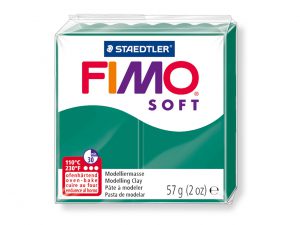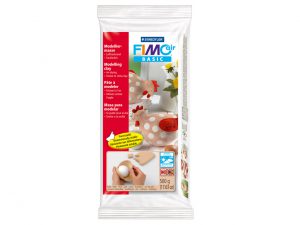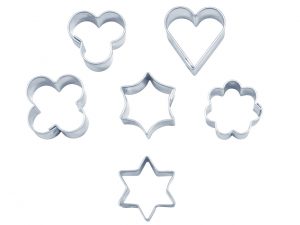
In this blog we will discuss the basics of Fimo modelling clay – answering questions like “what is Fimo made of?”, “is Fimo clay waterproof?” and giving some Fimo polymer clay ideas to help get you started.
What is Fimo?
Fimo is a brand of polymer clay. In fact, Fimo modelling clay was the first to be sold that could be hardened in the oven. What is polymer clay, you ask? It is a type of hardening modelling clay based on PVC (polymer polyvinyl chloride).
Used by beginners and professionals of all ages, Fimo is a popular choice for polymer clay-based arts, crafts and jewellery making.
There are several types of Fimo polymer clay, which include:
- Fimo Soft
- Fimo Effect
- Fimo Professional
- Fimo Leather
- Fimo Kids
- Fimo Air Light – an air-drying clay
What is Fimo made of?
The standard Fimo polymer clays are made of plastic powder (or PVC), plasticiser and additives. For safety and consumer protection, Staedtler has avoided the use of phthalate-based plasticisers in their oven-hardening clays since 2006.


Is Fimo clay toxic?
When baked correctly, polymer clay doesn’t release toxic fumes or leave a residue in your oven. However, when burnt, it typically releases hydrogen chloride which is colourless and corrosive, so can cause irritation and burns. It is always recommended that any polymer clay is not used with food and should not be consumed.
Is Fimo clay waterproof?
Once cured, polymer clay is waterproof and doesn’t need to be sealed against moisture. This is because it’s oil-based, rather than water-based like air-dry clays are – which makes polymer clay an ideal component in projects like snow globe making! Although, despite this, it’s typically unfit for use in freshwater aquariums.
How to use Fimo polymer clay


How to bake Fimo clay
Fimo modelling clay is cured in an oven that is pre-heated to 100 degrees Celsius – with the exception of Fimo Leather, which is hardened at 130 degrees Celsius – and you can do it all from the comfort of your own kitchen! This makes it the perfect option for beginners looking to expand their skills and try out a new project, but keep reading for more Fimo ideas for beginners. Finally, there is the Air Light clay – which doesn’t need to be baked at all. Simply let it dry out at room temperature and it’ll be ready to cut, sand, paint, and more.
Read our blog for more detailed instructions on how to bake Fimo clay.
Fimo polymer clay ideas?
So, what is Fimo used for? There are various art and jewellery pieces that can be made from Fimo modelling clay. From making polymer clay beads to pendant pieces and sculptures. If you are looking for Fimo ideas for beginners, why not try making your own necklaces, sculpting some festive Christmas decorations or some intricate drop earrings? All you need are the right tools, some coloured clay and the creativity to get started!
Where to buy Fimo clay
Now we’ve answered the main questions: what is fimo? As well as how to use Fimo and given you some inspiration, all that’s left is for you to buy some and give your next project a go. Luckily, you don’t need to go far to buy Fimo clay. We offer a range of Fimo polymer clays here at Cooksongold, as well as all the Fimo tools you’ll need to bring your jewellery designs to life! Simply order online and it’ll all be delivered to your front door.


Cooksongold
